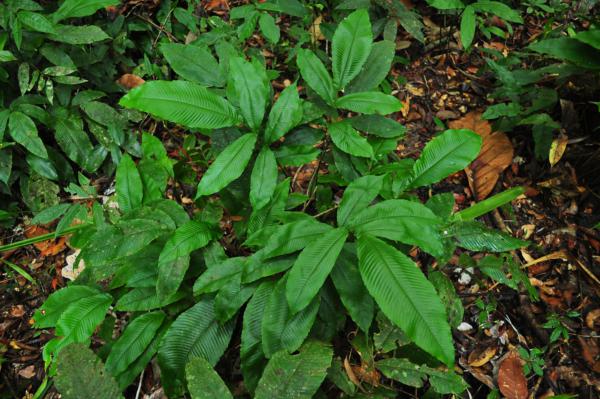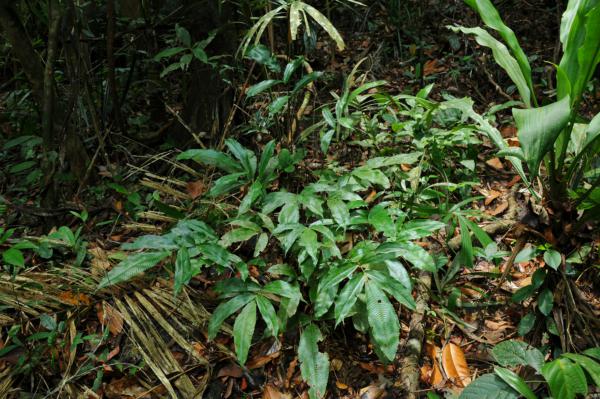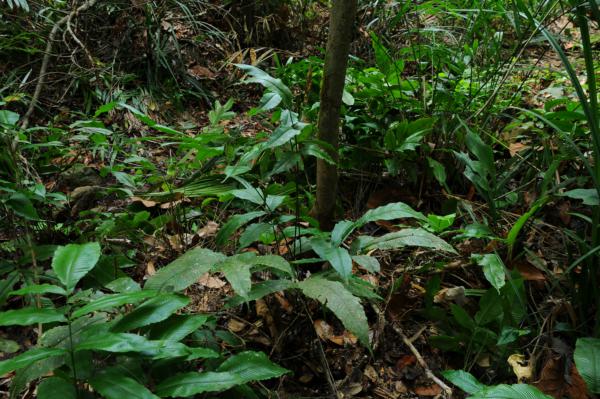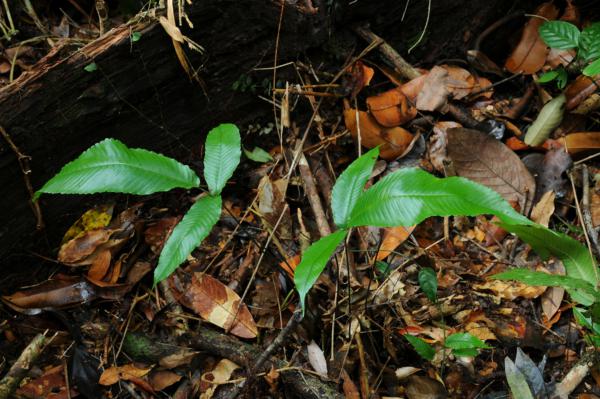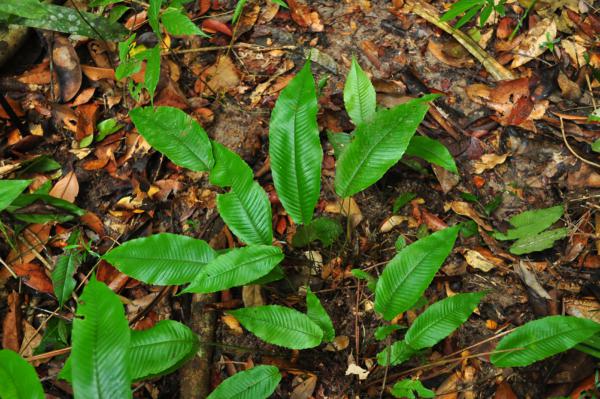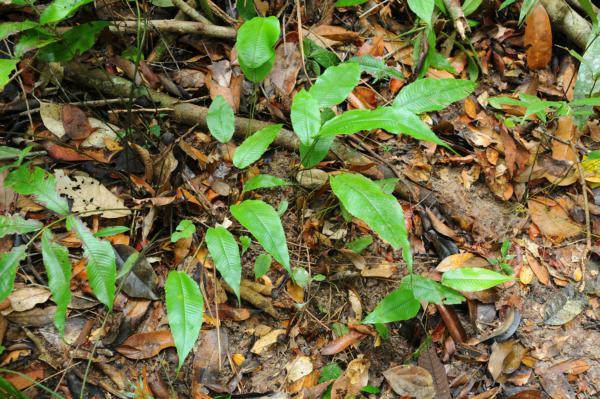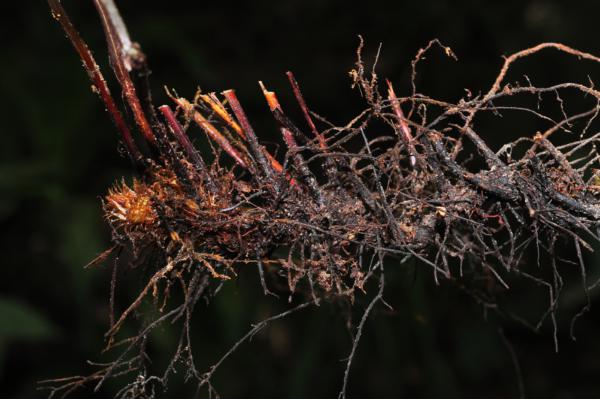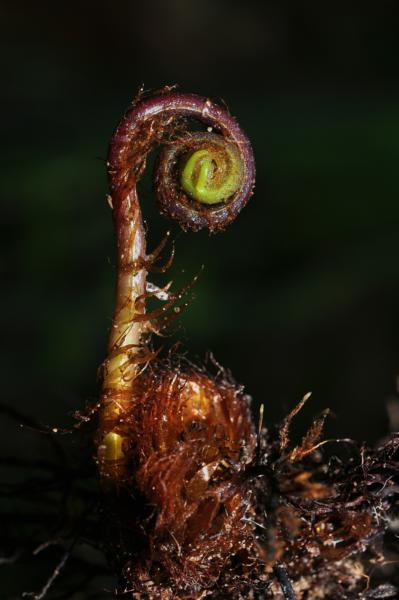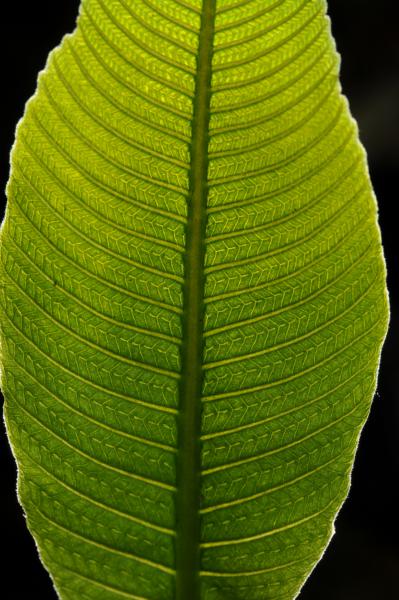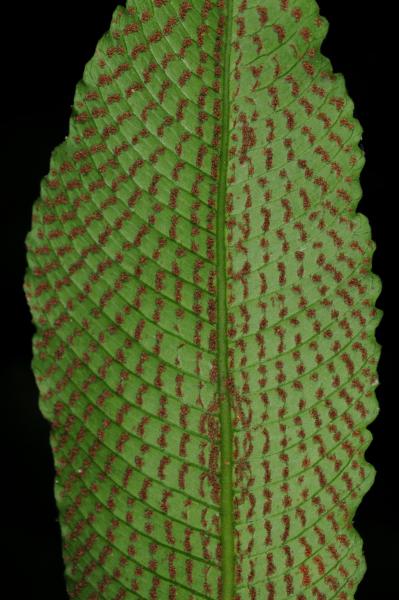
Cyclosorus rubicundus (Alderw.) S.Linds.
Family
Thelypteridaceae
Nomenclature
Cyclosorus rubicundus (Alderw.) S.Linds., Edinburgh J. Bot. 66: 359. 2009. – Phegopteris rubicunda Alderw., Bull. Jard. Bot. Buitenzorg Ser.3, 2: 162. 1920. – Abacopteris rubicunda (Alderw.) Holttum, Rev. Fl. Malaya ed. 1, 2: 292. 1955 [‘1954’]. – Thelypteris rubicunda (Alderw.) K.Iwats., Mem. Coll. Sci. Univ. Kyoto B, 31: 195. 1965. – Pronephrium rubicundum (Alderw.) Holttum, Blumea 20: 123. 1972; Holttum, Fl. Males., Ser. II, Pterid. 1: 536, f. 1o, 16a–d. 1982 [‘1981’]; Boonkerd & Pollawatn, Pterid. Thailand: 227. 2000. – Type: Sumatra, Lebong Tandai, Brooks 232/S (BO; BM).
Description
Description adapted from Holttum, Fl. Males., Ser. II, Pterid. 1: 536. 1982 [‘1981’].Rhizome short creeping, to 8 mm diameter, bearing hooked hairs. Young plants bearing simple fronds up to 30 x 12 cm, sometimes with fertile ones 20 x 5 cm; later fronds on these plants having lateral pinnae, the apical lamina progressively smaller. Stipes 20–30 cm long on sterile fronds, to 70 cm on largest fertile ones, base bearing thin narrow scales to c. 8 x 1 mm with a variable number of hooked hairs on them, above base ± flushed with dull red and bearing sparse pale short hooked hairs. Laminae 20–35 cm long, firm, drying dull reddish, consisting of an apical segment and 1–3 pairs of opposite pinnae, rarely simple; no buds at bases of pinnae; all pinnae asymmetric, broader on basiscopic side of costa than on acroscopic; basal pinnae short-stalked. Apical lamina of fronds with 3 pairs of pinnae 15–20 x 5–8 cm (proportion of length to width very variable), base broadly rounded to broadly cuneate, apex short-acuminate, edges entire to rather strongly undulate. Largest pinnae usually at a wide angle to rachis, 10–24 x 3–7 cm, widest about the middle or sometimes above the middle, base cuneate to rounded, apex abruptly caudate (cauda commonly to 2 cm long), edges entire (sterile) or undulate (most fertile ones); costules 3.5 mm apart (fertile) or 4.5 mm (sterile); veins 12–15 pairs, slightly prominent on lower surface, where sterile at 45° to costules, where fertile closer and almost at right angles to costules, excurrent veinlets all free; lower surface of rachis and costae sparsely to rather copiously hairy, most abundantly on young plants, hairs all hooked, similar hairs sometimes present on surface between veins; upper surface of rachis and costae bearing ± abundant pale hooked hairs less than 0.5 mm long. Sori medial, ± elongate, those on connivent veins often uniting; sometimes some sporangia with 2 hooked hairs distally, hairs on stalk not seen; spores with rather narrow wing and a few cross-wings.
Distribution in Thailand
PENINSULAR: Phatthalung, Yala, Narathiwat.
Wider Distribution
Peninsular Malaysia, Sumatra.
Ecology
Primary forest.
Proposed IUCN Conservation Assessment
Least Concern (LC). This species is widespread and not under any known threat.
Voucher specimens - Thailand
Middleton et al. 5415, Phatthalung, Lan Mom Jui Waterfall (E); Sangkhachand 1388, Yala, Bannang Sata (K).
Habit
Habit
Habit
Habit
Habit (simple fronds)
Habit (simple fronds)
Rhizome
Crozier
Venation
Mature sori
Site hosted by the Royal Botanic Garden Edinburgh. Content managed by Stuart Lindsay, Gardens by the Bay, Singapore and David Middleton, Singapore Botanic Gardens. Last updated 24 January 2012
